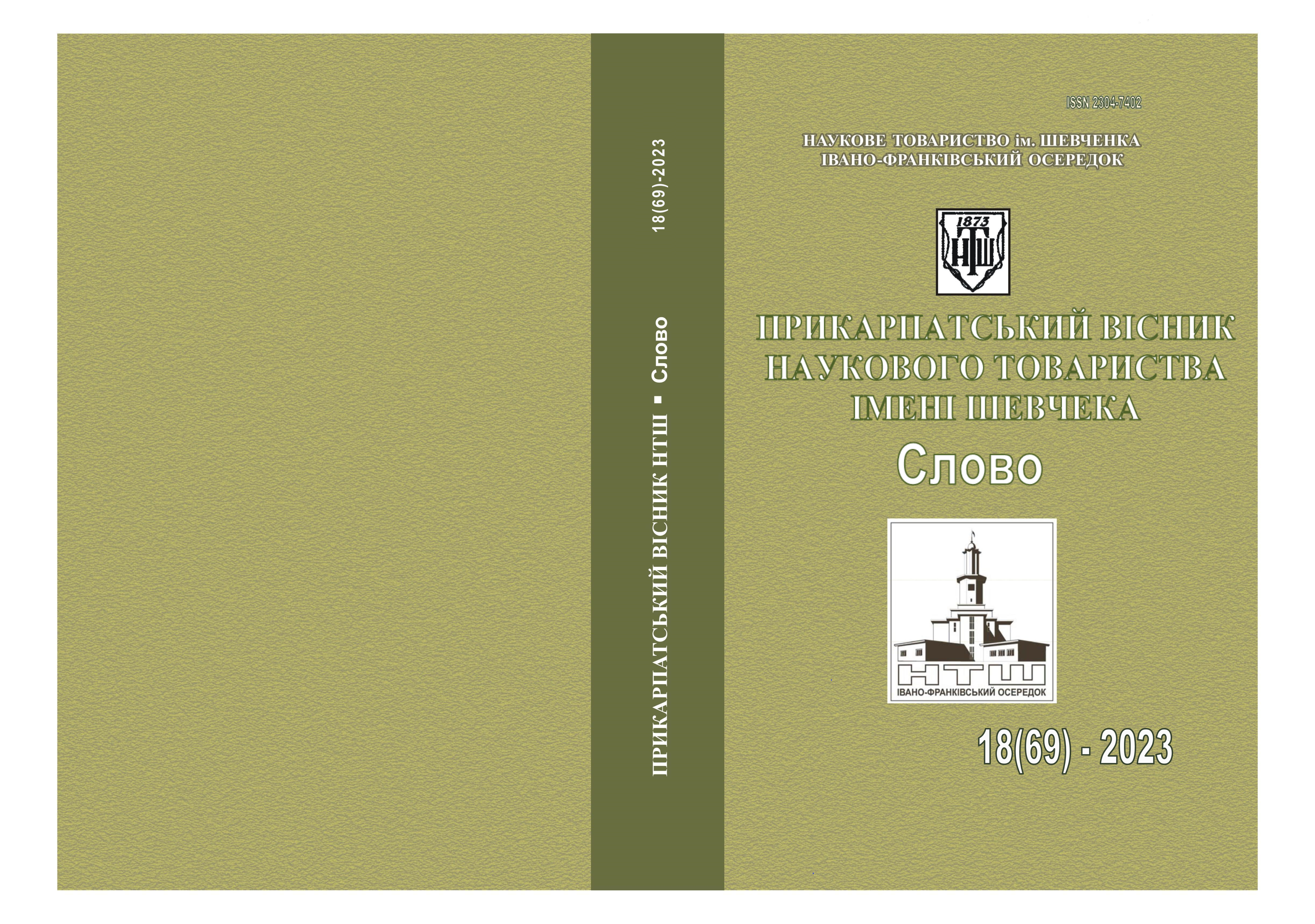ICONIC-CONVENTIONAL SYNCRETISM AND RITUAL-MAGICAL SEMIOSIS
DOI:
https://doi.org/10.31471/2304-7402-2023-18(69)-143-152Keywords:
magic, ritual, pristine semiosis, folklore, iconic, conventional, emblematicity.Abstract
Aim. The paper deals with the features of ritual-magical semiosis, structural and iconic-conventional consistency of ritual-magical formulas. The focus is on the functionality of visual analogies in interpretive strategies, and their semiotic imitation scenarios are studied. The ritual-magical expository constants are interpreted as complexes that mirror the system of structural and semiotic iconic-conventional connections and transitions of visual and verbal experience. Ritual and magical performances are interpreted as “emblematic staging” because they reproduce traditional, “edited” by time and experience conservative rites that have a fixed connotation and structure. Methods. The study relies on a system of genetic, hermeneutic, structural and semiotic methods. The author draws on the scientific methodology of semiotics and hermeneutics, and uses the methodology of literary cognitive science. This is due to the specific nature of the study, its subject of inquiry. Results. The magical and ritual complex is interpreted as the first creative comprehension of reality by a person on the basis of arbitrary associations and fantasy analogies. It marks the coordinates of the original epistemological focuses, primarily the organised interpretive practice. The visualisation and imitation of certain processes, artificial object and verbal compilation, and the combination of images and words into a single expressive complex constitute its structural integrity. It exhibit traces of emblematic comprehension and representation of ancient thought experience, where the dominant role is fulfilled by psycho-emotional observations of natural phenomena, their reduction into a special form, system of actions and speech. Sacrifices, totemism, animism, initiations, and various magical practices established the accessibility of visual-verbal syncretism for both awareness and expression. This was the format that was feasible for a common meaning making convention agreeable through “naturalistic emblematism”.
References
Бондаренко С., Заїка С., Рудь О. Лікувальні замовляння в Ізюмському районі: внутрішня форма і логіка функціонування // Вісник Харківського національного університету імені В. Н. Каразіна. Серія «Історія України. Українознавство: історичні та філософські науки». 2016. Вип. 23. С.75-79.
Гнатюк В. Нарис української міфології. Львів: НАН України, Інститут народознавства, 2000. 263 с.
Грушевський М. C. Історія української літератури: В 6 т. 9 кн. Т. 1 / Упоряд. В. В. Яременко; Авт. передм. П. П. Кононенко; Приміт. Л.Ф. Дунаєвської. Київ: Либідь, 1993. 392 с.
Ґадамер Г.- Ґ. Межі мови // Ґадамер Г.- Ґ. Герменевтика і поетика. Вибрані твори. Київ: Юніверс, 2001. С.176-187.
Давидюк В. Первісна міфологія українського фольклору Луцьк: Волинська книга, 2007. 324 с.
Денисюк І. Матеріали до дискусії про амазонок // Міфологія і фольклор. 2008. №1. С.96-99.
Ефименко П. Сборникъ малороссійскихъ заклинаній.Чтенія московські, 1874. 70 с.
Іларіон, митрополит. Дохристиянські вірування українського народу: Іст.-реліг.монографія. Київ: АТ «Обереги», 1992. 424 с.
Кузьмінська Б. Традиційні уявлення опілян про вроки та «урекливих» // Вісник Львівського університету. Серія Історична, 2012. Вип.47. С.253-261.
Леві-Строс К. Історія та діалектика // Леві-Строс К. Первісне мислення / пер. з фр., вступне слово та примітки С. Йосипенка. Київ: Український Центр духовної культури, 2000. С.265-291.
Мусіхіна Л. Магія українців устами очевидця. Київ: ТОВ «Гамазин», 2012. 400 с.
Новикова М. Прасвіт українських замовлянь // Українські замовляння / Упорядник М.Н.Москаленко. Київ: Дніпро, 1993. С.7-33.
Петров В. Український фолькльор (Заговори, голосіння, обрядовий фольклор народно-календарного циклю). Мюнхен: Український вільний університет, 1947. 142 с.
Потебня А. О некоторых символах в славянской народной поэзии // Потебня А. Символ и миф в народной культуре / сост., подг. текстов, ст. и коммент. А.Л.Топоркова. Москва: Лабиринт, 2000. 480 с.
Шухевич В. Гуцульщина. П’ята частин. Друге видання. Верховина: Гуцульщина, 2000. 334 с.
Frazer James G. The Golden Bough: a study of magic and religion. Oxford University Press, 1998. 858 р.
Turner V. The Ritual Process: Structure and Anti-Structure. New York: Cornell University Press. 1991. 211 р.
Wittgenstein L. Remarks on Frazer’s The Golden Bough. The Mythology in our language. Chicago: Hau Books. 2018. Р. 29-75.

